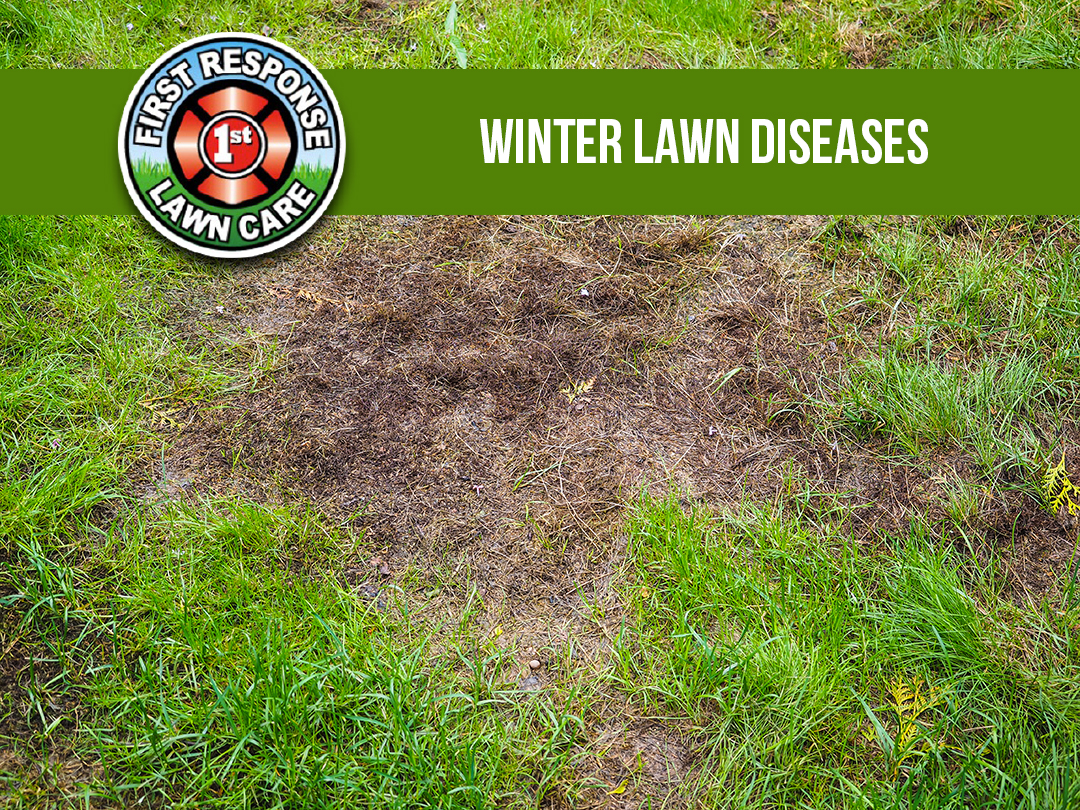Winter lawn diseases and what you need to know about them.
Severe damage can occur in lawns during the winter months. Sometimes patches of lawn become brown or bare during the winter and don’t return to green when spring comes around. For the most part, turf grasses are resilient and strong, though damage to grasses for Various reasons.
Cold Desiccation
Grasses will survive just about any temperature if they are blanketed with snow, but uncovered grasses in very cold conditions will continue to lose moisture and oxygen after the ground is frozen solid.
If the damage is minor, individual grasses may recover, or surrounding grass plants may fill in. With widespread damage, you likely will need to reseed or re-sod dead areas.
Snow Mold
When heavy snow falls over ground that is not yet cold, the moist conditions may foster a variety of fungal diseases collectively known as snow mold. In the spring when the snow melts, you will notice fuzzy or crusty patches, pink or gray in color, blanketing portions of the lawn.
Snow mold usually dies as sun and breezes dry out the lawn, but if the turf has been infected for a long time, the grass may die. Usually, though, the grasses will gradually recover. If the lawn still has debris from the previous year, rake this up to improve air circulation to the grass.
To prevent snow mold, make sure to de-thatch or aerate your lawn regularly, which will increase air circulation and prevent snow mold.
Crown Freeze
The crowns of turf grass can be killed if warm, moist weather is followed by a sudden freeze. This is most common in late winter and early spring, when unexpected frost occurs in warm climates.
Widespread damage requires reseeding or re-sodding. There is not much you can do to prevent crown freeze.
Voles (Field Mice)
Sometimes winter damage is caused by voles. The mouse-like pests average around six inches long, and they spend their winters tunneling beneath the snow or lawn debris, eating plant roots and keeping warm.
Re-seeding is usually the best option if the damage is not too severe. Otherwise re-sodding the damaged areas may be required. To keep voles at bay, remove dead grass and fallen leaves in the fall. Our fall or spring cleanup services might be right for you!
Questions? Contact First Response Lawn Care by clicking the link below to ask about our expert services in all these areas!

